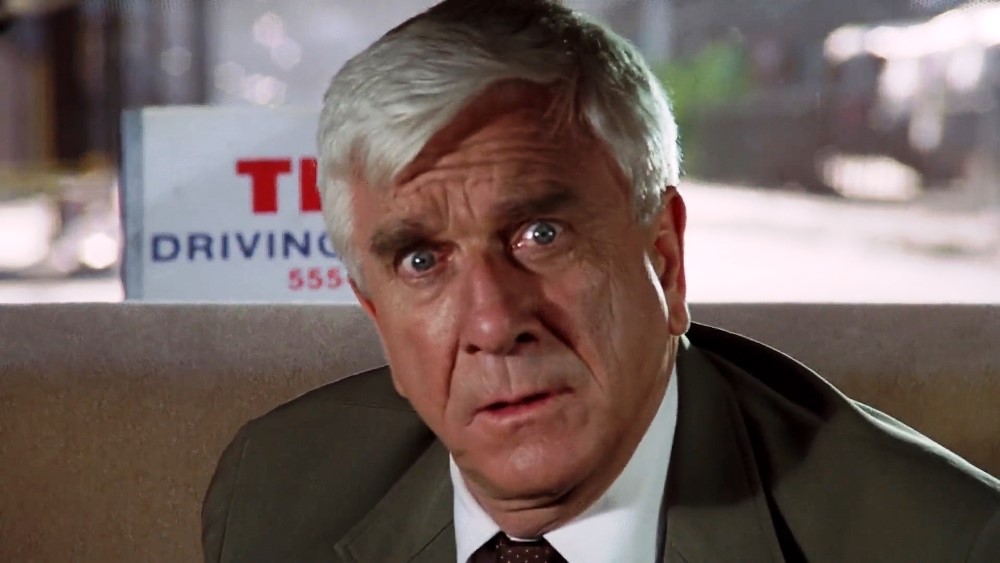
Over the years, slapstick comedy has had its ups and downs; its popularity has seen highs and lows. Luckily, slapstick, also known as physical comedy, has found a way to adapt and not fall into cinematic extinction. Just like any genre, some slapstick films have risen above the need to be simply average and strived for the desire to be extraordinary. Between the pratfalls, exaggeration, and zaniness, one can easily experience all the laughter that slapstick comedy brings to a multitude of audiences.
Without further ado, here are the top 10 slapstick comedies to check out!
10. Sleeper (1973)
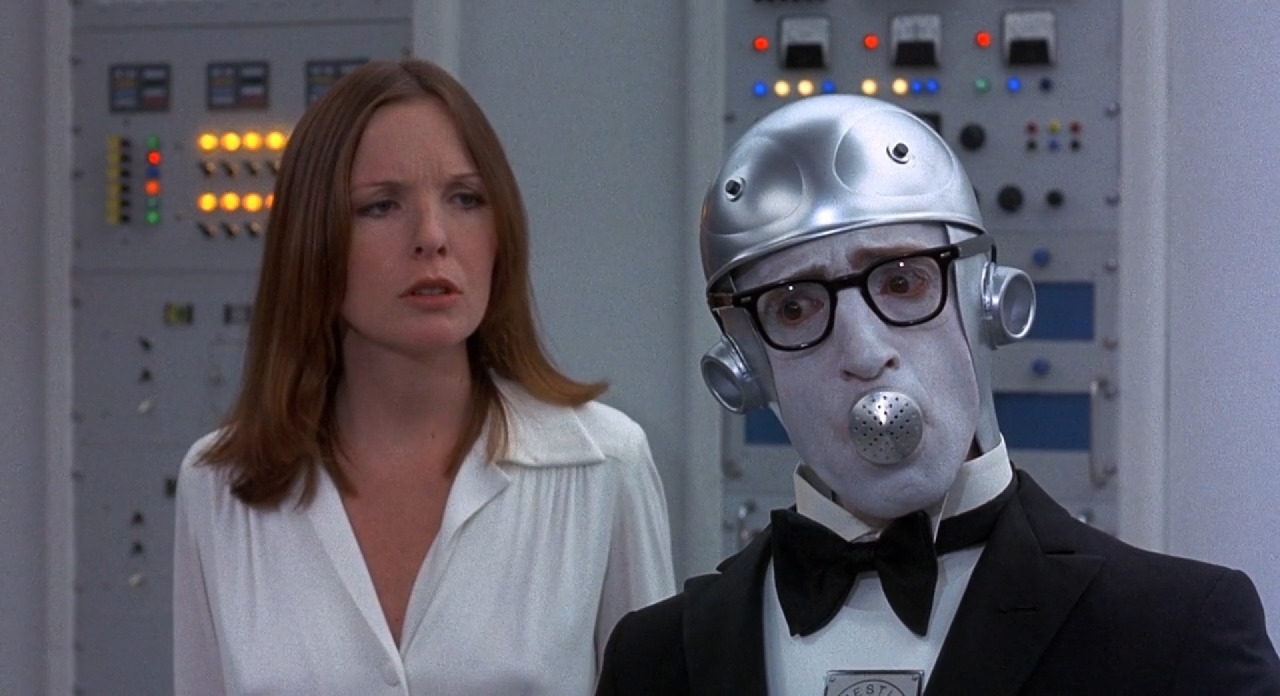
While slapstick may be a classic concept, Woody Allen shows how timeless the genre can be in his futuristic sci-fi comedy entitled Sleeper. The plot centers around a health-store owner Miles Monroe (Woody Allen) who dies during surgery. His grieving family decides to have him cryogenically frozen. 200 years pass and a group of rebels who hate the tyrannical regime wake Monroe up. The police arrive to arrest the group, and Miles, disguised as a robot, runs away. Eventually, Monroe meets Luna Schlosser (Diane Keaton), and they fall for each other. Later, Miles is taken by the authorities, and it is up to Luna and the rebels to rescue him.
While Sleeper does discuss many intriguing political ideas and contains Allen’s own brand of snobbery that may seem pompous but can also be very entertaining, it is the set pieces and slapstick essentials that make this film superb. Production designer, Dale Hennesy, must be applauded for his work on the film. The technical achievements of this film are creative and remarkable. The complex physical comedy and pratfalls also make the film wildly impressive.
Sleeper is an extremely amusing sci-fi spoof that marvelously incorporates slapstick comedy.
9. Caddyshack (1980)
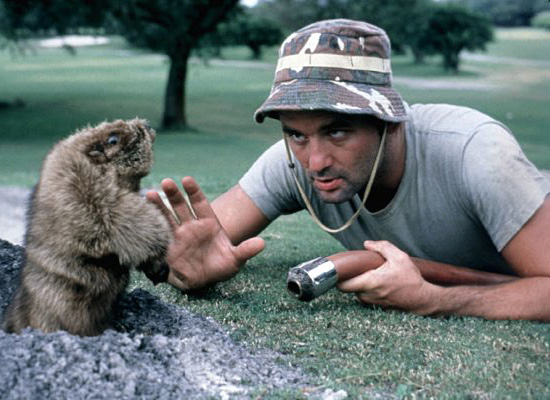
Caddyshack is a fantastic film that offers genuine laughs and a powerhouse of comedic icons. In the film, Danny Noonan (Michael O’Keefe) works as a caddy at the Bushwood Country Club to earn money for college. To gain votes for a college scholarship for caddies, Noonan offers to caddy for a prominent club member (Ted Knight) while receiving some New Age advice from golf guru Ty Webb (Chevy Chase).
While the film’s plot may appear thin, Caddyshack does not fall apart. The sometimes raunchy nature of the humor is delightfully irreverent and the sketch-like humor in the movie lands with viewers often. In some sense, the lack of a complex plot allows many of the jokes and actors to shine as the film sustainably manages to be constantly amusing.
Comedy veterans, Chevy Chase and Ted Knight, give the film a gravitas and allow the film to obtain landmark status in the realm of comedy. Other veterans, Bill Murray as the mentally unstable and gofer-hunting groundskeeper and Rodney Dangerfield as a lively nouveau rich golfer, also give strong performances and provide audiences with a multitude of quotes to be shared amongst friends.
Caddyshack is rightfully a well-established 1980’s slapstick classic.
8. The Naked Gun (1988)
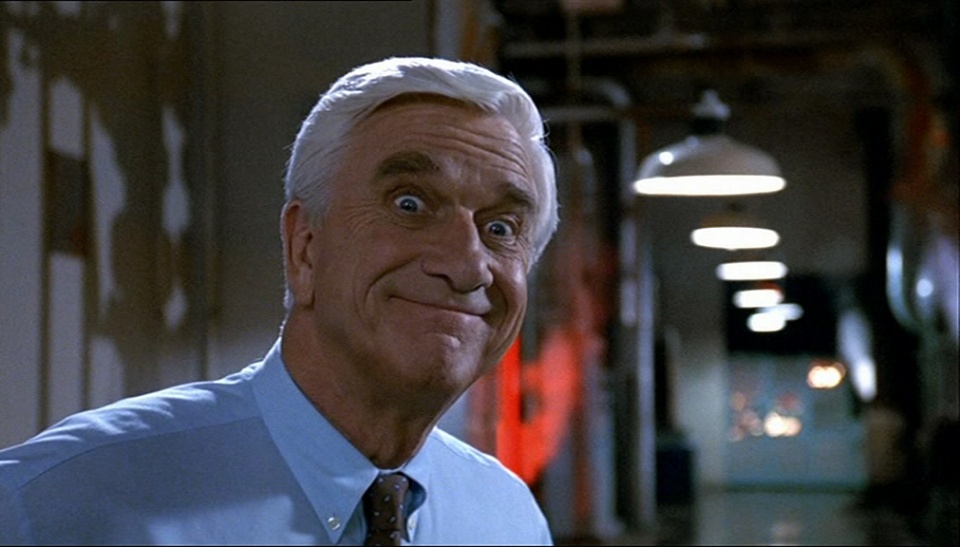
The film follows Frank Drebin (Leslie Nielsen), a clueless police detective, as he tries to save innocent people from turning into assassins through mind control. After his partner, Norberg (O.J. Simpson), is shot, Frank decides to find the perpetrator, business tycoon Vincent Ludwig (Ricardo Montalban). With the help of Jane Spencer (Priscilla Presley), Ludwig’s assistant, Drebin and Spencer must stop Ludwig before it is too late.
The first element of this film that must be mentioned is the scene-stealing performance of Leslie Nielsen. Unlike Airplane! where Nielsen was working in a large ensemble cast, there is no mistake that Nielsen is the leading man. As result, Nielsen cements himself as an iconic and prominent comedic actor. The timing of Nielsen and his ability to make his dramatic knowledge work with and even heighten the comedic material is a notable skill that Nielsen brings to the portrayal of Drebin. In the end, there is no joke Nielsen cannot land and no gag too silly for him to perform.
In addition to Nielsen’s acting talents, The Naked Gun uses every tool in the Zuckers and Abrahams’ box to provide audiences with a timeless and hilarious gem. The wild and unpredictable mixture of various comedy styles not only makes the film unique, but it gives even more credibility to the talent and adaptability of the Zuckers and Abrahams. The wordplay, crude humor, pratfalls, visual gags, and sexual innuendos that work harmoniously with the straight-man acting of Nielsen ensues laugh after laugh that will not stop. Overall, this is a film that not only makes people laugh at the jokes on screen but continues to make them laugh at the simple fact that they are finding something so transparently dumb funny.
This genius work of filmmaking from Abrahams and the Zuckers is a career highlight for Nielsen and an entertainment highlight for movie-goers.
7. The Party (1968)
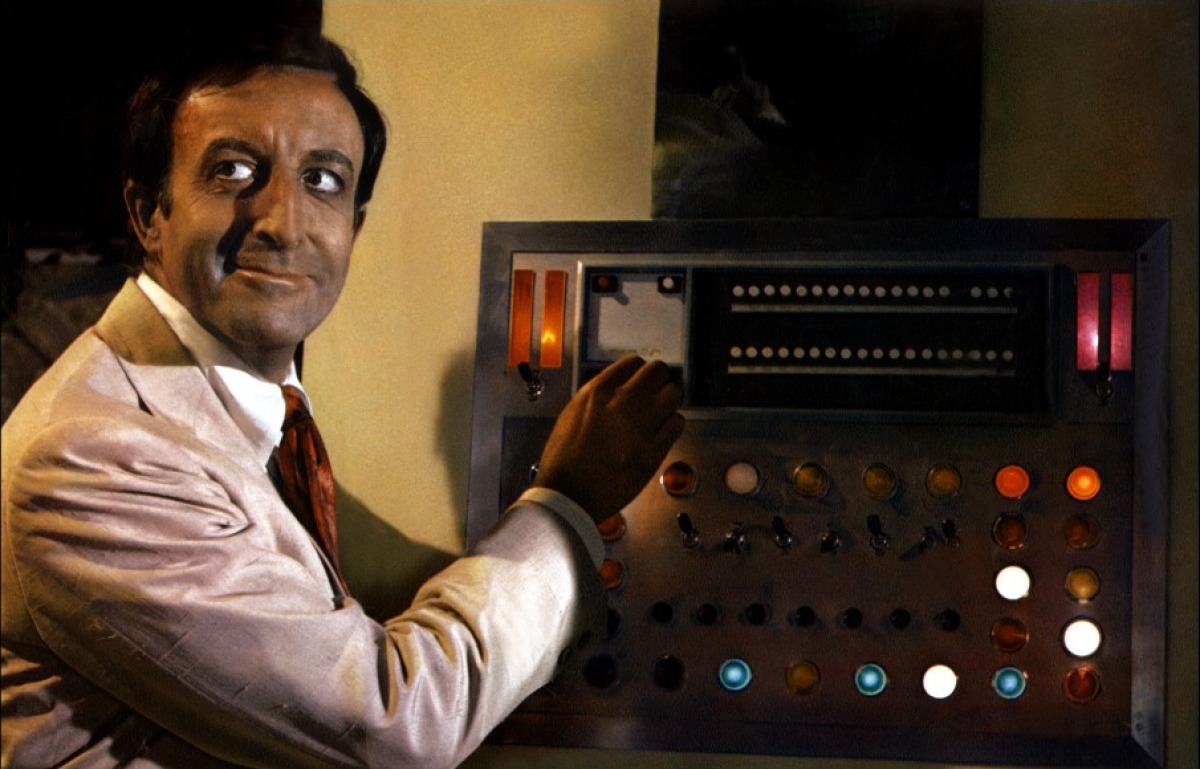
In a career of highs and lows, The Party is both a comedic success for Peter Sellers and a film full of ignorance. The film depicts an extra, Hrundi V. Bakshi (Peter Sellers), as he accidentally sets off explosives that ruin the set of a large war film. The livid director tells executive, Fred Clutterbuck (J. Edward McKinley), to fire him, but because of a misunderstanding, Bakshi receives an invitation to an elite party at Clutterbuck’s mansion where he proceeds to cause mayhem through his bumbling antics, extreme politeness, and a drunken butler (Steve Franken).
For better or for worse, Sellers does not become self-indulgent and solely depend on his hit-or-miss tropes. The gags that are painfully Sellers alone are limited to non-existent, and because of this, the character development of Bakshi becomes effective. The comedy, while gradually growing in zaniness, also stays relatively grounded and relatable. For example, one scene in the film depicts the wonderfully believable sentiment of waiting respectfully outside the bathroom door at a gathering while concealing anguish behind a glassy smile. Sellers’ acting along with a solid foundation for the jokes to land truly elevates The Party’s humor.
Now, we must address that American sensitivity regarding culture was not the same in 1968 as it is today. When this film is considered from the perspective of its intended 1968 audience, the Indian character is developed tactfully and without malice, thus creating another Sellers’ mask to show his acting prowess. When considered by today’s standards, the usage of brown-face is incredibly offensive, and rightfully so. One can only ask that the art be considered for the time it was created and not held to the standards of our more conscious society.
The Party’s worth and merit are easily compromised by its lack of global awareness, but there is still some solid humor to be found outside of its problematic component.
6. Mon Oncle (1958)
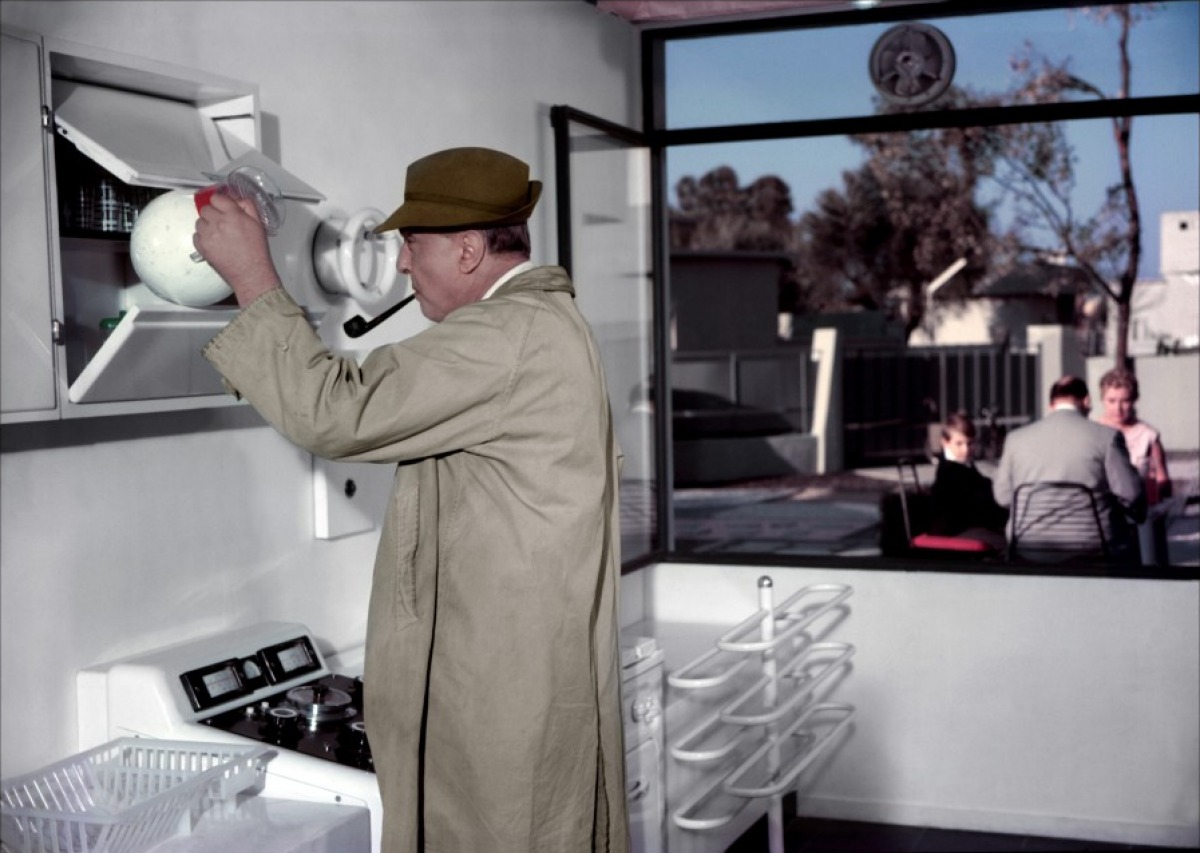
Mon Oncle is a meticulous addition to the slapstick comedy genre. The story follows Monsieur Hulot (Jacques Tati). He is a man who loves his grungy city apartment and cannot comprehend why his sister’s family has moved to the suburbs. Their house is a materialistic nightmare, which Hulot only visits to spend time with his young nephew (Alain Becourt). Hulot’s sister (Adrienne Servantie), however, wants Hulot to change his mind and enjoy her new way of life by conspiring to set him up with a job and a wife.
While it may seem contradictory, Tati finds a way to make slapstick thought-provoking and artsy. The cinematography is amazing, and there is a detailedness to each scene. It appears Tati applies a philosophical treatment to the film along with a subtly to the sight gags that is not commonly present in slapstick comedy. However, this does not mean that the creative and sometimes understated ambiance of the film diminishes the humor. The film is purposely arranged to reveal compelling revelations, but they are intertwined with fresh jokes and charm that make the movie insanely original.
Mon Oncle is an international and comedic delight.